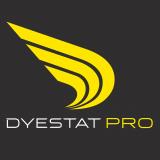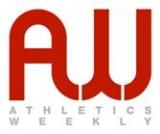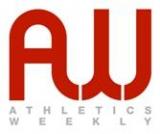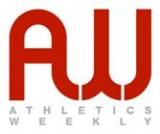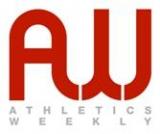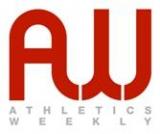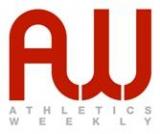Folders |
Why it still might be best to blank the plankPublished by
The plank exercise has stirred much interest and Dave O’Sullivan urges everyone to think about its function before coming to a conclusionMy recent article on the plank exercise, as I expected, received mixed reviews. It is only natural for people who use the plank daily to be defensive. In this follow-up article, I would like to clear up some of the comments I ve received and hopefully add some more clarity to the misconceptions, and most importantly show you how we are using the abdominals in my clinic at the moment. I will also offer some alternative methods to hopefully consider and use productively. What about research?Research is extremely important and it is all about interpretation. No two people may interpret research findings the same. Two different physiotherapists or coaches may read the findings of a study and take it to mean different things. It is our job to be research-led, but we must also rely on practical experience and learn from our mistakes, which is the reasoning behind this plank series. My opinion of the plank is based on a combination of my interpretation of the research as it relates to function and my practical experience of treating runners on a daily basis, what I find works and what does not. At my clinic we are dealing with a symptom, but the ultimate goal is to return a runner with more efficient use and control of their own body in order for them to be successful when running or in daily life. This is why we cannot rely on a certain area of research, but we really need to put it all together. We are not dealing with a particular joint we are dealing with the human body, which includes both hardware and software! Research in neurology and respiratory are just as important to consider when dealing with the human body and not just limited to back pain research. Why is holding a static plank in this position deemed to be the go-to core exercise for runners? What about neuroscience research? What is this position doing to our brains? A ‘correct plank will fix these issuesThis comment always makes me smile. What is a correct plank? Is a correct” plank even possible? Is it possible to get x amount of the 360 joints in the human body neutral” at the exact same time when we have gravity pulling down on our limbs? Where is neutral? What are the eyes doing, what phase of respiration are we in, and the reaction that these two variables causes on the human skeleton? What is going on with our motor control centre during the plank? What muscle reflexes happen when the eyes move in certain directions? Most people have very poor awareness of their bodies as it is. Holding a position and expecting a person to maintain a correct” plank for x amount of time is this possible? What happens to the neck when gravity is pushing down on the ribcage and spine? The cervical spine will have to react and go into extension. This is a natural reaction, yet we are coaching the opposite in an attempt to achieve a correct plank”. What is our brain thinking about that one? A correct” plank is essentially forcing the joints of the body to be in a position that it is rarely coupled in as part of their sport or life. As we inhale, our skeleton will do certain movements as we exhale we will do certain movements. A plank essentially is resisting these natural movements and attempting to keep neutral”. However, we are never neutral when breathing. It is driving the inhalation phase of respiration further. The latest respiratory research shows we require more exhalation. The plank is encouraging inhalation further and encouraging mouth breathing and hyperinflation of the lungs. Posterior tilting as a quick fixFixing the issues outlined in the previous article with a posterior tilt seemed to be a common response. However, I am not against an anterior tilted pelvis because runners use an anterior tilted pelvis far more during the gait cycle than a posterior tilted pelvis when we take into consideration relative motion of the spine and pelvis. Cueing a posterior pelvic tilt to address a plank form is a conscious cue and you are attempting to solve a top-down problem from the bottom up. How often does a flexed lumbar spine and pelvis couple in gait? At heel-strike perhaps. The pelvis and spine will then experience anterior tilt for the rest and therefore is cueing a posterior pelvic tilt to fix these issues appropriate? How does a pelvis tilt posterior in function? I would suggest that the expiration phase of respiration exhaling fully would depress the ribcage and cause a natural reaction of a posterior tilting pelvis as happens when running, sleeping and sitting. Exhaling correctly will cause a top-down driver to the pelvis. In gait, heel-striking the floor causes a reaction no matter what respiration phase we are in. Where is the heel striking the floor in the front plank exercise? Isometric actions of the spine when runningThe spine in the sagittal plane (forward and backward) will go into an isometric contraction in a split second during the gait cycle at the end range of motion when the spine does not want to extend any further and goes back into flexion and vice versa in flexion. Usually during this period, one hip is in flexion and one is in extension. Typically, this is when the tissues of the abdominals lengthen close to the end-range of motion. In a plank, we work the tissues mid-range isometrically in a correct plank” for times of up to a minute, but it happens for a split millisecond in gait. The abdominals need to depress the ribcage, extend, rotate and side- bend the spine relative to the pelvis and limbs for far greater periods of time. Why has the plank exercise become the norm for runners? How does this exercise relate in any way to running? I will use my extreme plank” as a progression using gravity as a higher load to train the ribcage, diaphragm and abdominals which I will outline in a next article. However, I am certainly not using this extreme plank to train the core for running. The plank is the worst core exercise ever for runners, including a correct technique” plank! Alternatives to the front plankThere are hundreds of great core exercises in standing that we are going to outline in pbrunfree.com however, I am going to give you some alternatives to the plank exercise in the same position of the plank to begin with. Credit must go to smarter people than me for coming up with these variations and special mention must again go to one of my mentors in biomechanics, Gary Ward. Please note these exercises would be classified as subconscious activities in my own hierarchy of running performance. Level 1 and the extreme plank will be covered in my next article nevertheless, these exercises can be implemented straight away without too much practice. In my opinion, they won t be as effective without progressing through the stages, but they will certainly be of far greater benefit than a traditional correct form” plank. The clock plankThis is a variation to allow the body to experience anterior tilt of the pelvis and lengthening of the abdominals in the sagittal plane followed directly afterwards by a posterior tilt of the pelvis and spine to take the spine and pelvis through two motions that it goes through in running. It follows Newton s third law for every action there is an equal and opposite reaction.” A lengthening of the abdominals prior to shortening may be far more effective than bracing and holding isometrically.
The options in this exercise are endless and this can also be repeated with both hands on the floor and moving one knee around the clock. After this exercise you will hopefully stand up and feel the abdominals have worked more than with the traditional front plank. The next morning you will also hopefully notice your abdominals have been stimulated far more than your usual adaptations from the plank exercise.
Your body s motor control or software will be adjusting, therefore hopefully you will have cortical reorganisation taking place in your brain and the relationship of certain joints and muscles will be working together in motion as has to happen in gait and running. I would suggest this option is far superior to a traditional plank exercise. Many will say they use the plank as a foundation exercise, yet never actually progress that foundation. Starting in the press-up position and as mentioned above and just moving the pelvis up and down, side to side and a gentle twist again in my opinion is far superior than a plank for foundation training. Motion is lotion to the brain! Movement is key as the brain will learn and adjust its software while it is taking place. To see the video demonstration of these core exercises and a free six-part core-training course outlining the six stages log on to pbrunfree.com. I have made these videos available to clear up any misconceptions about the exercises. I hope this follow-up article has cleared up some misconceptions about the previous article and stimulated some thought and reflections about why the plank is considered the go-to core exercise for runners. However, I will reiterate in my opinion the core exercise is the worst core exercise ever for runners! Dave O Sullivan is the clinical director for Pro Sport Physiotherapy Huddersfield and the head physiotherapist for Huddersfield Giants Rugby League Club. He treats runners at his Huddersfield clinic. For more information and his running theories please visit pbrunfree.com The post Why it still might be best to blank the plank appeared first on Athletics Weekly. Read the full article at: www.athleticsweekly.com
|
